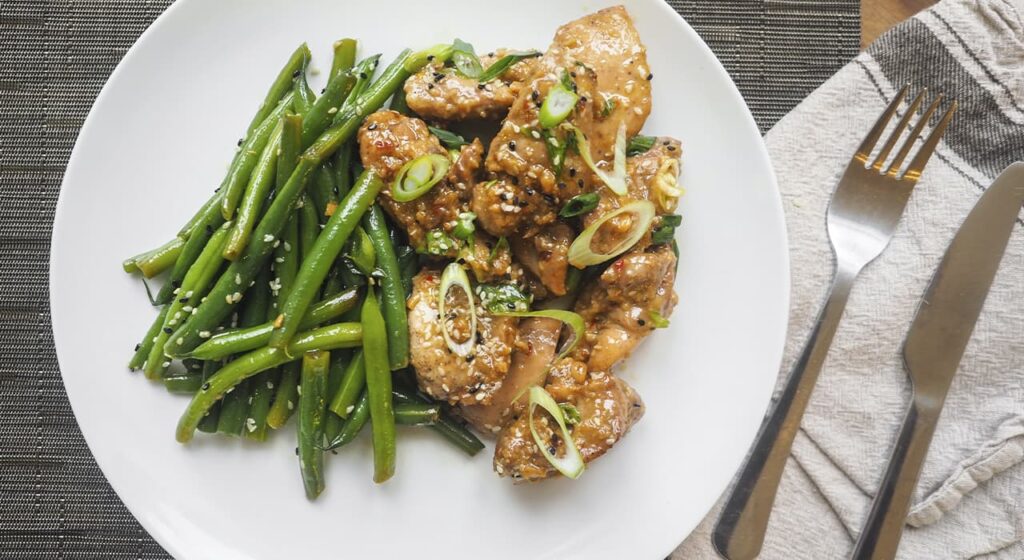The word “fusion” in cooking refers to the mixing of many culinary traditions (products and methods of their processing) in one dish. This style is especially fashionable in the last few decades, but it would be a mistake to call it a new trend, because the entire history of cooking is a gradual mixing and interpenetration of cultures. Americans simply gave a beautiful name to this trend. It happened in the late 1970s, when representatives of the Pacific, South American and European peoples, among whom there were talented chefs, came to California. Even earlier, in the early 20th century, a similar thing was happening in Hawaii, where American and Japanese culinary traditions came together.
The first fusion restaurant was opened in Los Angeles. Americans, Japanese and Italians worked there as chefs. Originally the word fusion meant the fusion of Eastern and Western traditions, for example Japanese and French cuisine or Chinese and pan-European. Later the notion expanded and began to mean integration of any, even very similar, cultures. Now fusion is primarily a compromise, a search for local substitutes for exotic products and an adaptation of foreign traditions to the needs and tastes of the local population. For example, spicy Chinese or Polynesian dishes are cooked less sizzling, and not only lamb is used to make pilaf. One of the directions of the fusion style is the “reanimation” of ancient recipes and their adaptation to the changed conditions. A separate direction of this style is the creation of unusual combinations of products of the same culinary tradition (for example, meat marinated in coffee or dumplings with nuts). It was this trend that gave rise to the misconception of the fusion style as a combination of incongruous products. Fusion style dishes, while unexpected, are sure to be delicious and balanced.
Throughout history, whole peoples and singles have migrated to distant lands, bringing with them recipes of dishes loved since childhood; travelers have enriched the cuisine of their homeland with new products, spices, and culinary tricks. The first culinary experiences with potatoes, tomatoes, corn were akin to the way we now get used to tropical fruits. Today’s bold experiments, in turn, will become classics for future generations of cooks. After trying a foreign dish, foodies always try to replicate it at home using local ingredients. Sometimes a pathetic semblance is obtained, but sometimes the experiment succeeds, and a new, independent dish appears.
The widely known story of the Olivier salad is a prime example of the fusion style in Soviet cooking. This dish has long had a life of its own, and even a small return to the original recipe (for example, replacing peas with capers), makes it unaccustomedly exotic. California avocado and shrimp sushi rolls are another example of mixing cultures. Sometimes it can be difficult to determine which traditions are at the heart of the dish. For example, many cuisines around the world have meat pie, bread, or tortillas. The only difference is the choice of meat, flour, and local spices. In addition, each hostess creates her own fusion, even cooking from the recipe, because the taste of the dish depends very much on the hands of the cook. If we trace the history of all the foods on our table, it turns out that what we eat is the most authentic fusion. Some foods are so ingrained in our lives that we don’t consider stir-fried potatoes, rice or pasta with ketchup to be fusion dishes. On the contrary, a traditional German dish, sausages with applesauce, seems like a bold experiment, to say nothing of Italian “devil’s ice cream” with hot peppers and garlic.
There are no strict rules for making fusion dishes. With minimal knowledge and skill, you can create an interesting and delicious dish. The main thing is that all products must be fresh, and the constituent parts of the dish do not conflict in taste and consistency. The first experiments in fusion style should not be too bold. For starters, try substituting one or more ingredients in your favorite dishes. Acquire new spices or use familiar spices in other dishes, such as adding a cinnamon stick to baked meat, a pinch of curry to a familiar salad, or grated ginger to a bowl of soup.
For culinary experiments, buy soy sauce, good olive oil, fresh or pickled ginger. These products will greatly change the taste of familiar dishes. The principle of mixing cultures will be useful for those who want to diversify side dishes. Consider bulgur, chickpeas, mung bean, mung bean, lentils, peas, various beans and many varieties of rice. Try new ways of food processing: short-term frying in a Chinese wok, steaming, baking fish in plenty of salt.
